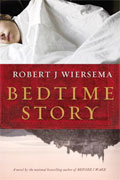During the summer of 2009, British editor and former bookstore proprietor
Maxim Jakubowski asked 11 authors, including me, to contribute to a volume of 21 essays about cities and other places in the world that are closely associated with

famous fictional sleuths. Given that he wanted me to write about
Dashiell Hammett and San Francisco, a city I have long adored (and about which I had penned
two previous books), I was pleased to accept his invitation.
The finished work appeared in the UK earlier this fall:
Following the Detectives: Real Locations in Crime Fiction (New Holland Publishers). While I’m not really in a position to review the book, I will say that it’s pretty darn impressive. Oversized and suffused with photographs and colorful maps of the regions over which the fictional crime-solvers under discussion roam, it is a valuable reference book for mystery and crime-fiction fans, but also a travel guide of sorts for literature lovers.
Chapters cover such pairings as Ian Rankin and Inspector Rebus’ Edinburgh (written by
Barry Forshaw), Sara Paretsky and V.I. Warshawski’s Chicago (Dick Adler), John D. MacDonald and Travis McGee’s Florida (Oline Cogdill), George Pelecanos’ Washington, D.C. (Sarah Weinman), Arthur Conan Doyle and Sherlock Holmes’ London (Jakubowski), Ross Macdonald and Lew Archer’s Southern California (Michael Carlson), Colin Dexter and Inspector Morse’s Oxford (Martin Edwards),

Arnaldur Indridason and Inspector Erlendur Sveinsson’s Iceland (Peter Rozovsky),
Declan Hughes and Ed Loy’s Dublin (Declan Burke), and of course my piece about Hammett, private eye Sam Spade and San Francisco. In a departure from that familiar journalistic pattern, Jakubowski asked novelist John Harvey to write about his own experiences, and those of his police protagonist, Charlie Resnick, in Nottingham, England. Additionally, there are two spreads at the back of the book that cover international writers who are not already discussed at length, such as William Marshall, Philip Kerr, Leonardo Padura, Boris Akunin and Michael Walters.
This book is fairly heavily designed, and there are a few pages on which the type is hard to read against a vivid backdrop. But for the most part, the visual appearance of
Following the Detectives contributes to the text’s intrigue. Jakubowski has sprinkled the chapters with sidebars, some of them featuring quirky facts about the authors or their protagonists (did you know, for instance, that Donna Leon “will not sanction translation of her books into Italian”?), others looking at how the fictional characters under discussion have been featured in films. In many cases, lists have been made of other novelists who set their stories in the cities addressed in the main chapters, and in the Boston section--which concentrates on works by
George V. Higgins and Robert B. Parker--there’s a longer sidebar about
Dennis Lehane. Jakubowski must have recognized from the outset of this project that he would be criticized for not commissioning separate chapters about
Loren D. Estleman and Detroit, Martin Cruz Smith and Moscow, Kathy Reichs and Montreal, Robert Wilson and Seville, Frank Tallis and Vienna, Earl Emerson and Seattle, and other such obvious pairings, but covering all of that territory might have made
Following the Detectives several volumes long. He’s found a middle ground in at least mentioning as many imaginary investigators as possible in this 256-page work.
I shall leave it up to others to applaud more of this book’s assets and nitpick its deficiencies. I can only say that I am proud to appear in these pages with such excellent company, and I look forward to giving copies of
Following the Detectives away as Christmas presents (even though I’ll have to
order them from Britain). There’s lots of material here to satisfy longtime crime-fiction enthusiasts as well as newcomers to the genre.
Labels: crime fiction, holiday gift guide 2010







































